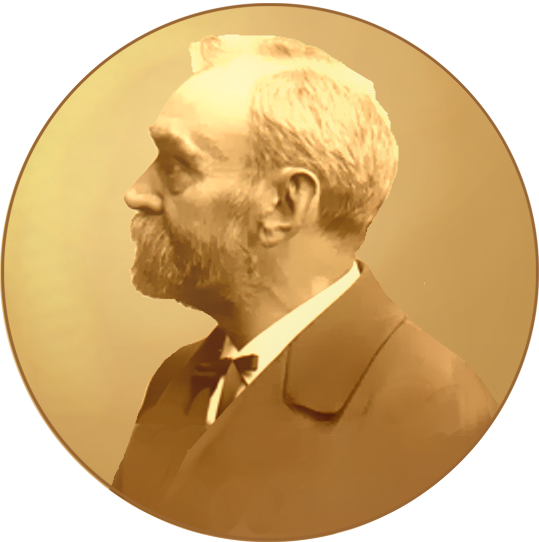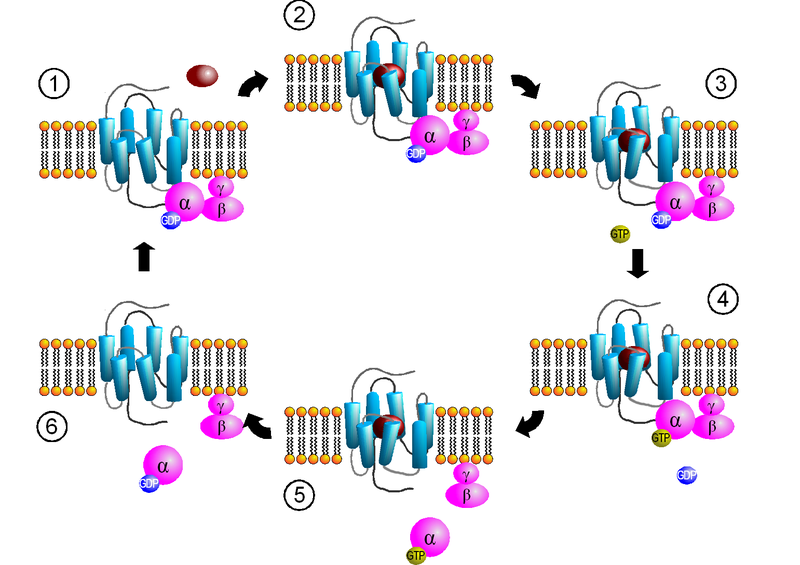 |
| By AlphaZeta (Own work) [Public domain], via Wikimedia Commons |
Let's for now disregard other senses such as hearing, texture and so forth and consider the flavour of something we eat as being mainly a combination of tasting (tongue) and smelling (nose). This is of course simplistic, but still taste and scent are two of the most important senses involved in our perception of food. If we concentrate on these two senses, which are both so-called chemical senses, we can actually invoke three Nobel prizes to illustrate important parts of this sensing process. They are all very elegantly described in both popular and scientific terms, depending on your background or taste, at the web site of the Nobel prize:
Step 1 - What happens when food aromas reach our nose? "The big picture"
Richard Axel and Linda B. Buck - The Nobel Prize in Physiology or Medicine of 2004 |
| Photo by Bill Branson, NIH Medical Arts and Photography Branch [Public domain], via Wikimedia Commons |
Axel and Buck revealed through their work answers to questions such as
- how come that we can smell more than 10 000 different odours when we only have around 1000 different receptors?
- What happens when the molecules "dock" onto the receptors and the signals are forwarded to the brain?
- How come that humans, mice and dogs have so different thresholds to smelling things?
Step 2 - What happens when tasting or odorant molecules reach our taste or smell receptors?
Robert J. Lefkowitz and Brian K. Kobilka - The Nobel Prize in Chemistry 2012 "for studies of G-protein-coupled receptors"Popular information: An illustrated popular article at the Nobel prize site.
Step 3 - What happens when the signal has been received by the receptor?
Alfred G. Gilman and Martin Rodbell - The Nobel Prize in Physiology or Medicine 1994 "for their discovery of G-proteins and the role of these proteins in signal transduction in cells"
Popular information: An illustrated information "cartoon" at the Nobel prize site.
Gilman and Rodbell received their prize ten years earlier than Axel and Buck. Their discoveries must have been vital for both later prizes. Particularly Lefkowitz and Kobilka's work (step 2 above) builds directly on this work. Whereas Lefkowitz and Kobilka got their prize in 2012 for work on the receptors (see picture above), Gilman and Rodbell got their prize 18 years earlier for what happens when the signal is being transmitted further by the receptor. Inside the cell, close to the inside-part of the receptor, there are so-called G-proteins. When the receptor is activated (e.g. by an odorant molecule) it puts the G-protein into work which in turn does its job in transmitting the signal further. This "job" can be G-proteins in the brain registering light (responsible for you being able to see), forwarding signals from your tongue or nose to the brain and so forth. This research describes thus one part of the previous step, so you may say that this work is in a way at an even more detailed level than the two above.
Conclusion
In my eyes, these three prizes reveal how wonderfully complex biological systems are (this is just a very few processes of our biology). At the same time they demonstrate the immense achievements of ingenious researchers, as result of loads of hard work, persistence and elegant solutions in solving these puzzles. Finally they demonstrate how science is built brick by brick; the results we get today or tomorrow all build upon the work of others.
References
The Nobel Prize in Physiology or Medicine of 2004: http://www.nobelprize.org/nobel_prizes/medicine/laureates/2004
The Nobel Prize in Chemistry 2012: http://www.nobelprize.org/nobel_prizes/chemistry/laureates/2012
The Nobel Prize in Physiology or Medicine of 1994: http://www.nobelprize.org/nobel_prizes/medicine/laureates/1994
.png)

I just found this site for the first time. It has such great content! I noticed it doesn't look like it has been updated since 2012. Erik do you still own this page? Please post more :)
ReplyDeletegaridozo: You're right, it's been a stand still for a long while. I'm still discussing with myself where to proceed with this. At the moment we're trying to push on with the Kitchen stories project/network (relevant blog entries here). We've set up a Facebook group on this as well (search for "kitchenstoriesnetwork" on FB if you're in there).
ReplyDeleteThanks for the nudge, though. Perhaps this is what it takes to get on with the blog?